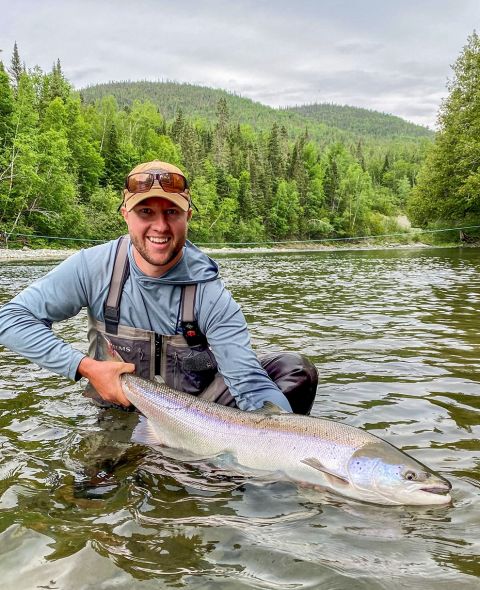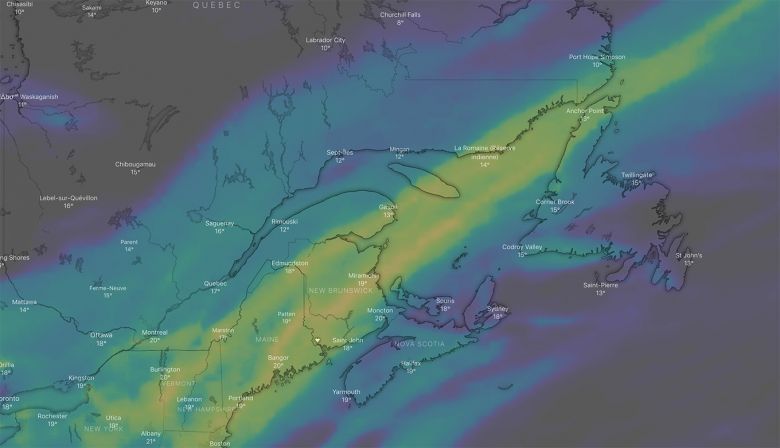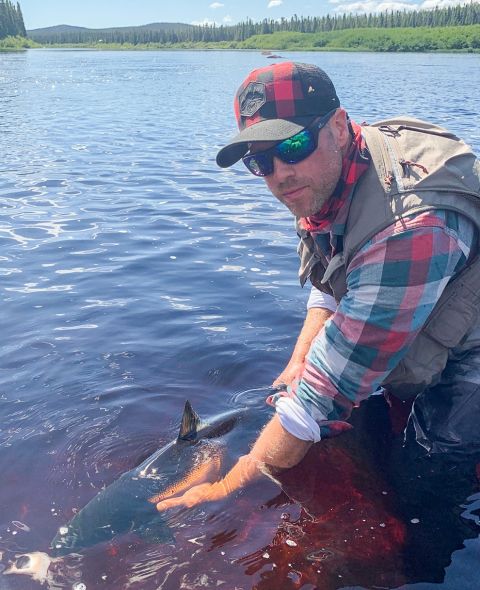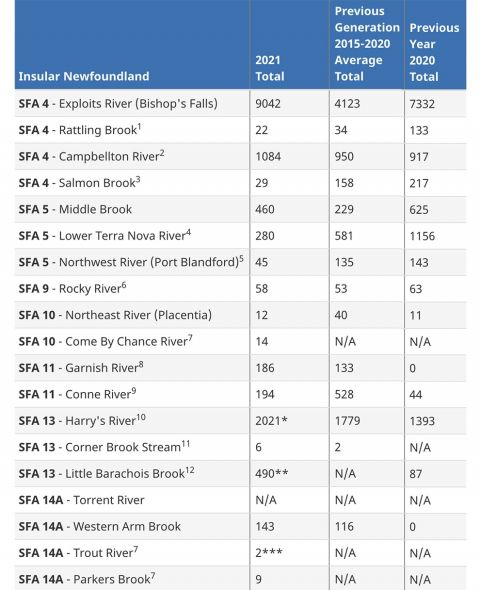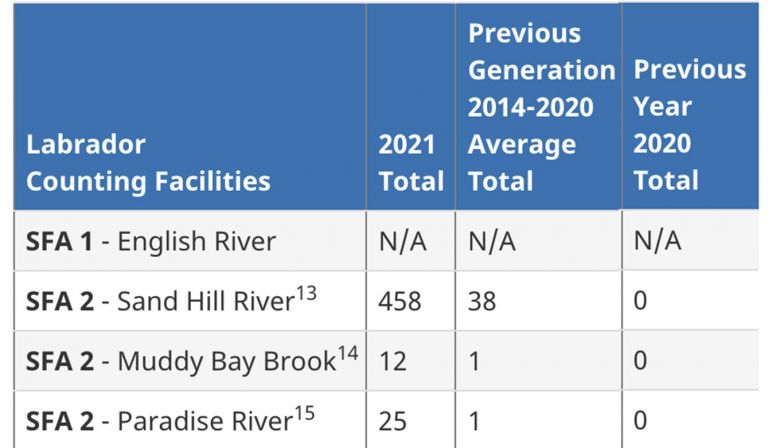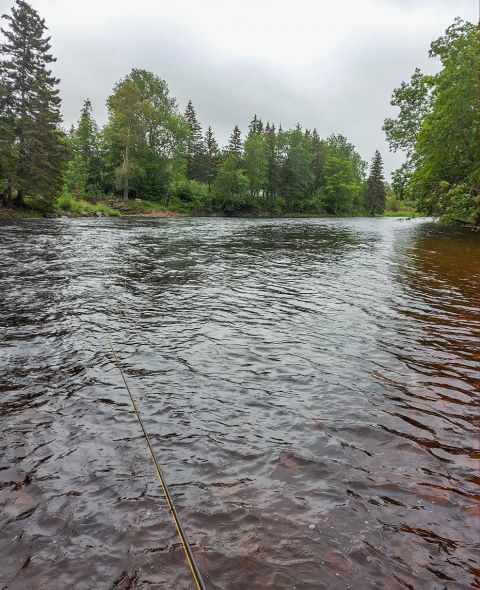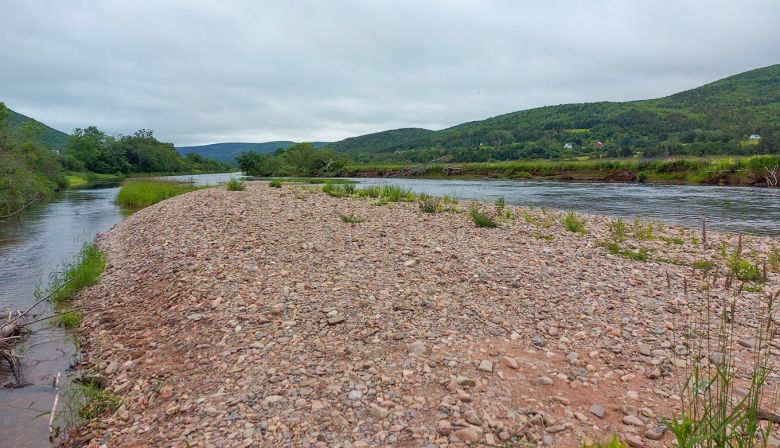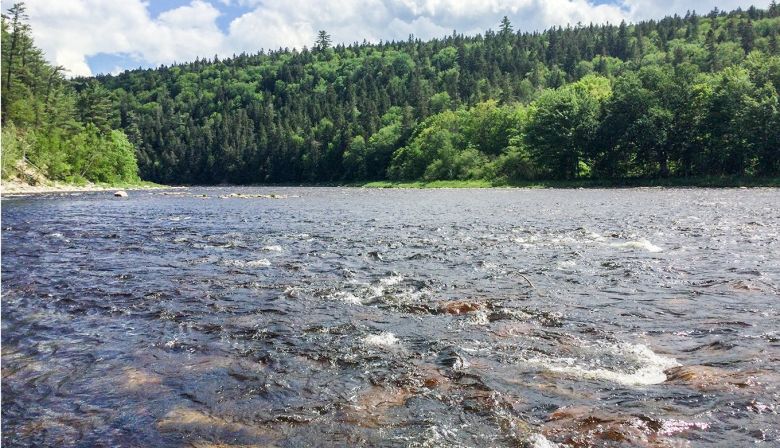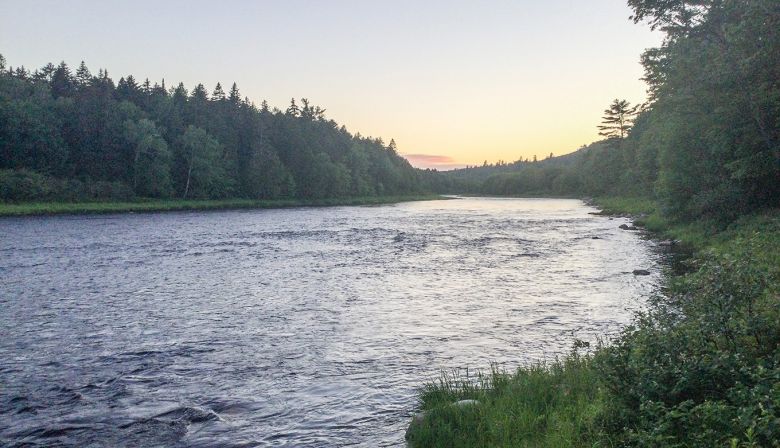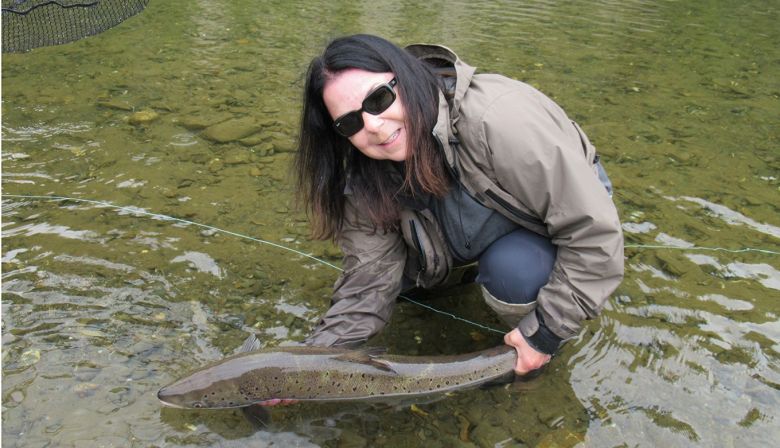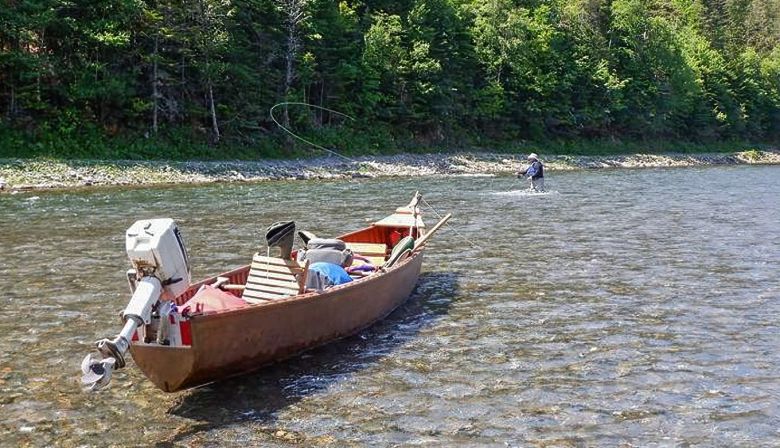MAINE
Narraguagus
Colby Bruchs, Biologist with Maine Department of Marine Resources (DMR), notes:
Six new salmon this week! A very welcome soaking rain on July 4 raised river discharge above 200 CFS for just the second day since late May. All of the week’s new returns were captured in a single tend of the counting trap the following day. A friendly reminder that salmon do, in fact, need water to ascend rivers.
Narraguagus River Atlantic Salmon count — through 6 July: 6 new ATS this week. Season total: 10, made up of 9 MSW and 1 grilse.
Penobscot
To July 6, there have been 442 Atlantic salmon at the Milford Fishlift, and 3 more counted at the Orono Dam.
It will be interesting to see if there is any bump in migration numbers with the upcoming tropical storm.
Kennebec
Jennifer Noll of Maine DMR says:
Cooler air temperatures have thankfully decreased the water temperature on the Kennebec River in Waterville.
Early last week, during the periods of high water temperature (over 24.5°C), the fish lift and cameras were checked first thing in the morning, then shut down for the remainder of the day.
The fishway was open since Saturday morning. Unfortunately, the heavy rain event that came through most of the state this past weekend did not significantly affect flows on the Kennebec.
However, flows are finally above minimum historical levels at 2,220 cfs. No salmon or shad were caught in the Lockwood fish lift during the past week.
A total of 17 Atlantic salmon were trapped at the Lockwood Dam, and transported to the Sandy River. An additional salmon was rescued from the ledges below the dam after Brookfield installed flash boards. See Bangor Daily News story.
COVID-19 AND THE LATEST DEVELOPMENTS
Internationally, Prime Minister Trudeau is saying a couple of things – that there will need to be about an 80 per cent full vaccination rate among Canadians – and that it will be a long time before unvaccinated visitors will be allowed in. This latter statement was made July 8 at a press conference in Coquitlam, B.C.
One bright point is that Canadian air routes among Atlantic Canada destinations are being reinstituted, and new ones are being tried.
